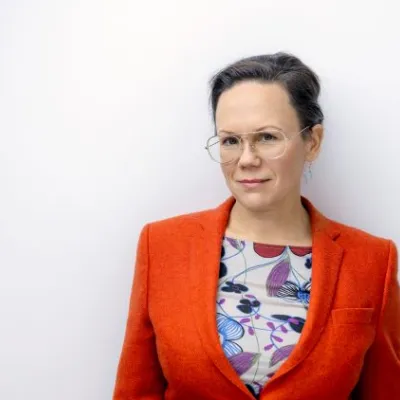It’s been almost three years since we founded the science incubator VTT LaunchPad. We started out with some fundamental assumptions, and now it’s time to look back at them. How did they work for us?
Our target is to spin off high quality, investable startups that build on VTT’s intellectual property. It is too soon to evaluate how well we have succeeded altogether. We can, however, draw some lessons from our first years. I have summed them up in five key learnings.
1. Give the team a chance and let the market decide
We decided to take in all teams that fit our criteria and let them prove themselves with each step they take. We thought the best ventures will secure funding for their international growth path. This proved a wise decision.
I have always questioned the superpowers of juries equipped with superficial information and bent with individual historical biases. We have now seen that some teams that evoked the least support from the advisory jury members have proven most capable in the incubator environment. On the other hand, some teams endorsed by an advisory jury have stagnated despite their promising technology, as the team has not been able to develop their proposition into a funded startup.
2. Pay special attention when offering metered funding
We wanted to apply metered funding based on the lean startup method. We thought it will help teams “build the right things” instead of “building things right”. We thought it could guide teams’ decision making and accelerate learning instead of letting the teams waste resources and erode morale. Metered funding, however, turned out surprisingly unpopular.
Most of our incubator teams make their major development steps aided by the Research to Business (R2B) grant, 70% of which is funded by Business Finland and 30% of which is complimented by VTT. The R2B grant tends to cover the team’s near-fulltime work for 12 to 18 months, and besides customer-centric R&D work, at least 40% of the budget is allocated for commercialization activities.
The grant decision for R2B grants typically takes six months, whereas we can decide on metered funding within days. Now, as you can see, there is little lean about R2B. Few teams, however, have opted for our lean option, metered funding.
One reason for our metered funding to not attract teams may be its uncertainty. In the spirit of “persevere, pivot or stop” team members may ask, what happens if the lean sprint proves the team’s assumptions wrong and the project is stopped. They may forget that pivot or persevere tend to be the most likely results after a sprint. Additionally, leaving behind a secure payroll to become an entrepreneur may require a longer mental incubation time, such as in an R2B project.
We learned that we need to be engaged with the teams well before they apply for the R2B funding to ensure the high ambition level for the project. We also need to secure a tight steering for the R2B projects. Additionally, we need to reformulate the way we communicate metered funding. We also need to seek to understand the teams’ hesitations and tailor the offering better to their needs.
3. Cover the whole spin-off path – not only the final steps
We created VTT Launchpad to support teams in taking the final steps before spin-off. We soon found out that we need to build the entire innovation pathway from lab to market by taking charge of the R2B application process.
We started to coordinate and facilitate the application process happening twice a year, but this was not enough. At the beginning of 2021 we did not have any candidates up to par for the incubation programme. We had planned a bootcamp for screening and preparing candidate teams, but we quickly pivoted. We turned the bootcamp into a commercialization workshop targeted at earlier stages of innovation and any curious VTT researcher. It turned out a success.
We need to be present already in the research phases to offer researchers alternative views to the future and tap into the early-stage deal flow. As teams work on identifying market opportunities, they may also warm up to their personal entrepreneurial possibilities.
We want to help teams enhance and direct their ambitions towards global success and make bold plans accordingly.
4. Steer the team composition from the beginning
In some cases, a scientist can grow into a successful startup CEO, but in other cases the team really benefits from external commercialization knowhow. This is what we thought when starting the incubator, and we still do.
We have learned that we need to be even bolder with the way we steer the composition and growth of a team from the very beginning of the incubator path. It serves no one that teams are left to struggle when they lack the required competence. We also need to learn the right ways of doing this with love and care. Any tips will be warmly welcomed.
When evaluating the team composition, it is not only about the competence of the team members, but also the business networks they bring along to the team. If a research team does not have a network essential for global success, they need to get it on board as soon as possible from outside. Of course, this may lead to dilution of their stakes in the potential startup or even harder discussions on who is really needed onboard at all.
A surprising observation I have made is related to a prior entrepreneurial experience of a team member. It can be useful but also harmful. In general, VTT teams with the most entrepreneurial experience have been the least willing to adapt when new evidence has emerged and have persevered on a chosen track much longer than would be of benefit.
People may mistakenly believe that experience and skills in one particular type of entrepreneurship are easily transferable to another type of entrepreneurship. Being smart won’t necessarily protect people from this bias.
5. Collect more data of the incubator’s performance
As an incubator supporting the lean startup mentality, we want to apply it to ourselves as well. We want to ask ourselves whether we should persevere, pivot or stop our specific ways of working or offering. So far, we have succeeded in this fairly well – but not perfectly.
We need to improve on collecting data on our service delivery. Before the COVID pandemic we collected feedback from our colleagues at the end of each session by handing out a feedback form and collecting it at the door upon exit. Delivering the same session online is more efficient – however the response rate on digital feedback surveys is disrespectfully low, and we’re left with no feedback.
Without feedback it is very difficult to systematically improve and make informed and timely changes to our services, such as turning a bootcamp into a commercialization workshop I mentioned before or drop trainings that have not delivered value to our teams.
We need to be more rigorous and inventive at collecting data in the digital era. Once again, we will warmly welcome tips.










